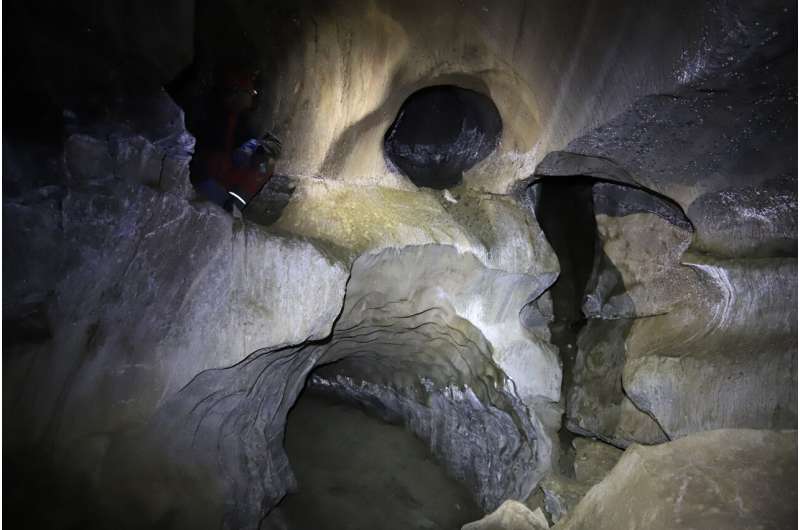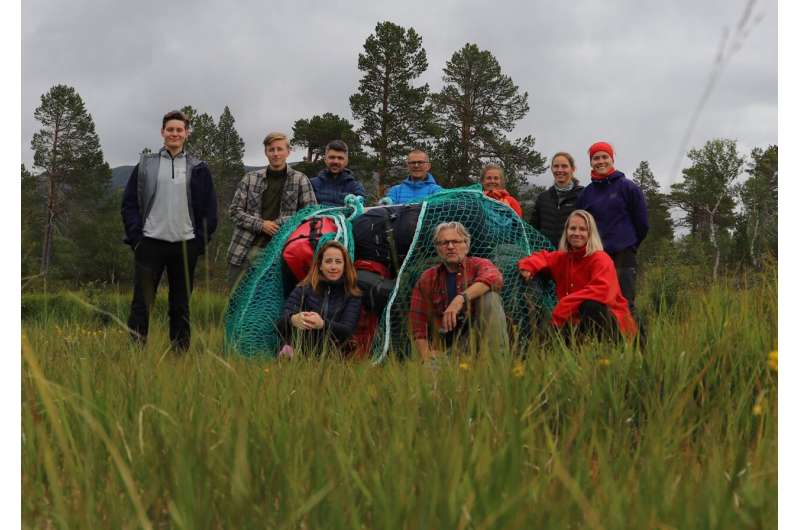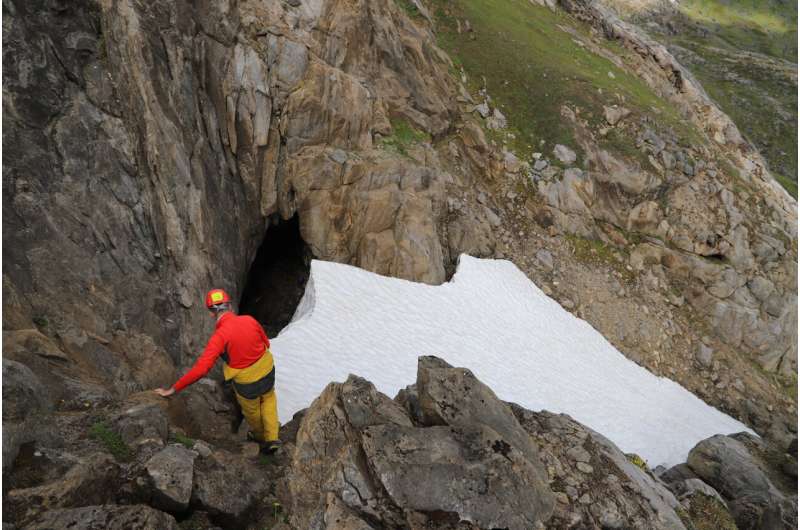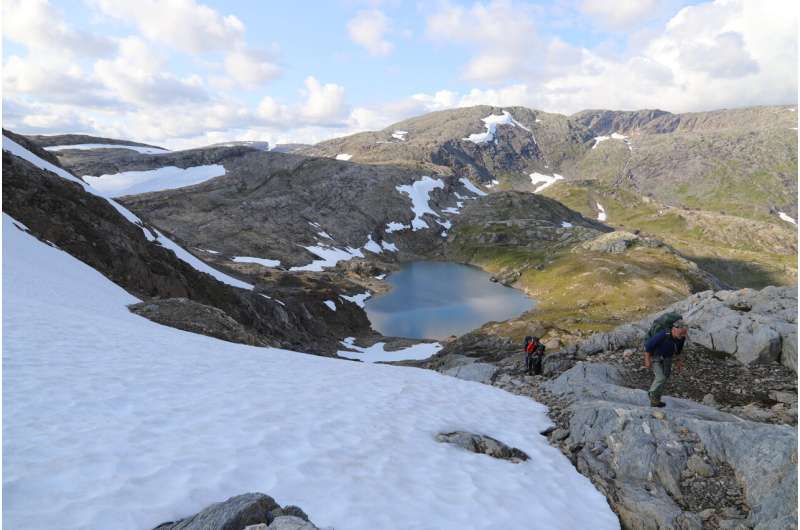Cave passages below the ice. Credit: Ana Sofia Reboleira.
A new study reveals that the bacterial communities that live in subarctic caves, which can give rise to products of particular interest to medicine and industry, are more diverse and complex than those that live on the surface soils in same area. Global warming is exacerbated in subarctic regions and therefore represents a risk to the maintenance of this biodiversity.
The fieldwork took place in August 2019, in the icy mountains of Northern Norway. The multidisciplinary research team collected samples in six subarctic caves to study the environmental variables and, for the first time, to compare the bacterial and invertebrate communities of these caves.
Now the results, published in Environmental Microbiome, show that the microbiome of subarctic caves is more diverse and complex than that on the surface soil.
"Caves microbiomes are less variable between caves in the same area than between the surface and the caves. The strong environmental filter in cave environments similarly shapes the unique bacterial communities that thrive in these extreme habitats. The ecological networks show us that the cave bacteria cooperate more between them in caves than at the surface, and this is related to the scarcity of nutrients in caves, that drives different bacteria to depend on each other," explains Ana Sofia Reboleira, leader of the study, professor and researcher at the Faculty of Sciences of the University of Lisbon.
-
The fieldwork team, waiting for the helicopter to transport the equipment up to the mountains in Northern Norway. Credit: Ana Sofia Reboleira
-
Cave entrance. Credit: Ana Sofia Reboleira
-
Approaching the caves. Credit: Ana Sofia Reboleira
The increase in bacterial diversity inside caves, compared to that on the surface, "may result from greater specialization of ecological niche and levels of interdependence related to the nutrient cycle, vital for the functioning of biodiversity on our planet," she adds. Caves are extreme ecosystems, with total absence of light and very low availability of food—hence the organisms that inhabit them are considered extremophiles.
These results also shed a light on the impact of climate change on the subarctic regions –regions geographically located immediately south of the Arctic Circle, at latitudes from 50º to 70º North, towards the North Pole. "These ecosystems are particularly vulnerable to environmental changes. Accelerated melting in these areas, resulting from global warming, may have a negative impact on these communities, which may have a preponderant role in the discovery of new bioproducts, particularly with regard to antibiotic resistance," warns Ana Sofia Reboleira. Furthermore, "we may lose this unknown biodiversity before knowing what services they provide."
More information: Ana Sofia Reboleira et al, Nutrient-limited subarctic caves harbour more diverse and complex bacterial communities than their surface soil, Environmental Microbiome (2022). DOI: 10.1186/s40793-022-00435-z
Provided by University of Lisbon



























